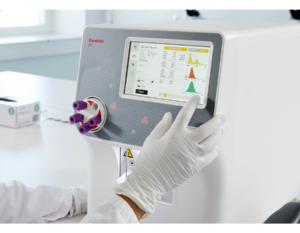Prognostic value of a complete blood count in dengue fever
A complete blood count (CBC) is shown to have a prognostic value in management of dengue fever. Studies have shown CBC testing to be relevant for monitoring of severity and progression of the disease. Compared with many other prognostic indicators, CBC testing is also a cost-efficient analysis and therefore readily available in laboratories worldwide.
A complete blood count – a cost-efficient option for disease monitoring
Dengue fever is an endemic in many regions. According to the European Centre for Disease Prevention and Control, more than a half million cases and over 100 deaths related to dengue fever were reported globally in January 2024 (1). On 25 March, Puerto Rico declared an epidemic, following a spike in disease cases (2).
Early detection and determination of disease severity to provide patient with proper medical care can greatly lower fatality rates. A range of markers have been suggested for use as prognostic indicators, for example, liver enzymes, IL-4, IL-10, TNFα, and more, however, these tests are not always available in laboratories due to their relatively high costs (3). A complete blood count, on the other hand, is a cost-efficient alternative and the test is thus available in most laboratories worldwide.
Thrombocytopenia has been shown to be the most common hematological feature of dengue fever, followed by leukopenia (3). Additionally, the lymphocyte percentage of the WBC differential count, determined at time of admission, was shown to predict the length of hospital stay in a study conducted by Rao and colleagues at the Jagadguru Jayadeva Murugarajendra Medical College, Davangere, India (3). Rao and coworkers conclude that a complete blood count can function as an early indicator of prognosis in dengue fever even in areas where sophisticated biomedical infrastructure is lacking.
To supports dengue monitoring, an accurate count in the critically low PLT range is of utmost importance. Boule automated hematology analyzers therefore feature PLT extended count. When activated, the analyzers count three times as many platelets as in normal count mode when a low PLT count is detected.

The hematology analyzers also feature floating discriminator technique that prevents microcytic RBCs to be falsely counted as PLTs and elevated PLTs to interfere with the RBC count.
Reference
1. European Centre for Disease Prevention and Control, www.ecdc.europa.eu (accessed 2024-03-28).
2. Portal del Departamento de Salud, www.salud.pr.gov (accessed 2024-03-28).
3. Rao et al. Dengue Fever: Prognostic Insights From a Complete Blood Count. Cureus 12(11):e11594 (2020).
